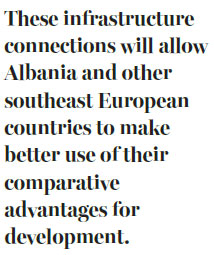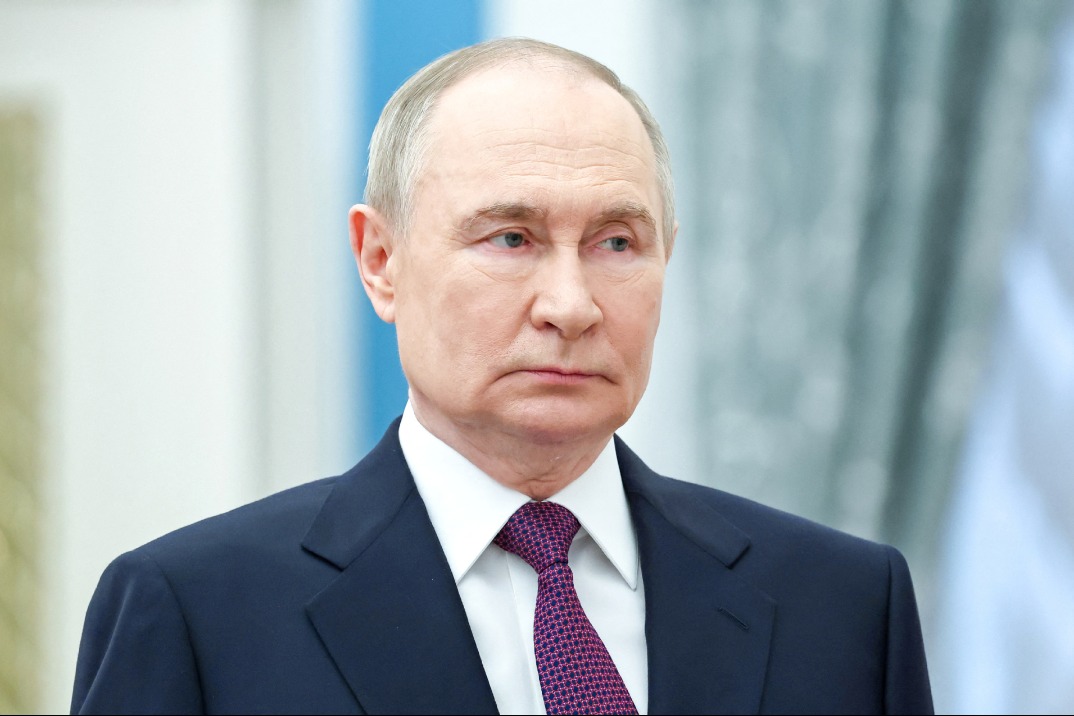A welcome revival of an old friendship

China and Albania were partners once before, and now the Belt and Road Initiative is bringing them together again
I vividly remember my first trip to China in June 2016, for the Second China-CEEC Ministerial Meeting on Promoting Trade and Economic Cooperation, organized by China's Ministry of Commerce, under the Suzhou Guidelines for Cooperation between China and Central and Eastern European Countries.
The topics ranged from exploring products with special characteristics to broadening cooperation in production capacity and equipment manufacturing to innovative financial tools that allow cooperative infrastructure development. In the end, the countries signed the Ningbo Declaration of the Second China-CEEC Ministerial Meeting on Promoting Economic and Trade Cooperation.
Bilateral agreements in place between Albania and China cover pretty much all potential aspects of cooperation - including economic, industrial and technical cooperation, mutual investment promotion and protection, institutions related to standardization, intellectual property, education, and culture.

I had expected our meeting with Chinese Minister of Commerce Gao Hucheng to be a very brief business-as-usual meeting. Instead, he took the time to stress the very special relationship Albania had with China and said he looked forward to it being as special as it used to be. He emphasized that this was a particularly historic moment, in which both countries again stood very close to each other.
During the 1960s and 1970s especially, Albania was considered to be China's "beacon of light and friendship" in Europe. This special relationship was exclusive to the point that an intense cultural exchange, focused on music and cinematography, succeeded for many years. Albanian movies were so popular in China that even nowadays it's quite common to find random Chinese people recalling exact phrases and scenes from Albanian movies of the time.
What are the potential implications of such high-level attention to Albania?
The last two years have been very intense in terms of high-level visits between the two countries, making this a "harvest" year, as the Chinese would describe it. This was especially so after the meeting in Tirana between our prime minister, Edi Rama, and China's Vice-Premier Zhang Gaoli, when many agreements were negotiated and signed between the countries.
After the smooth completion of the acquisition of Mother Teresa International Airport and Bankers Petroleum Co by Chinese investors, China has become one of the major investors in Albania.
Certainly, having the highest GDP growth rate in the region makes it easier for Albania to shine once again as the beacon of light it used to be many decades ago, with regard to the relations with China. This time it is in terms of tangible potential economic cooperation instead of sheer ideology. Between January and May this year, Albanian exports to China have grown by an outstanding 135 percent, while imports have been steady.

In addition, Albania is now considered the last unexplored tourist destination in Europe. Consequently, Chinese companies - as well as some of the 700 million Chinese tourists expected to travel abroad in the next five years - have shown great interest in Albania as a single destination, or as part of a package that could include Greece and Montenegro.
However, I believe there is something bigger on the plate: the Belt and Road Initiative. China has placed an invitation on the table - an invitation to countries at a similar economic development stage, mostly emerging markets - to step up the game of economic growth and prosperity. This is perhaps the world's largest and most ambitious platform for regional collaboration.
These infrastructure connections will allow Albania and other southeast European countries to make better use of their comparative advantages for development. For example, Albania could have much potential for labor-intensive manufacturing.
China wants to upgrade its position in the world economy through such win-win proposals. It is investing in the infrastructure of emerging market countries, which later on could become its primary final markets. The trade routes made possible by infrastructure and the 21st Century Maritime Silk Road will re-create the shipping routes that made China one of the world's foremost powers many years ago.
The ultimate success of this initiative depends on the understanding and proactive involvement of the many countries throughout Europe and Asia linked together by the Belt and Road.
The author is a PhD student at the National School of Development at Peking University and a former adviser to Albania's minister of economic development, tourism, trade and entrepreneurship.
(China Daily Africa Weekly 10/06/2017 page9)
Today's Top News
- Ukraine crisis a lesson for the West
- Autonomous networks driving the progress of telecom sector
- China launches cargo drone able to haul up to 1.2 tons
- Key role of Sino-German ties stressed
- Tariffs hurt global trade: Experts
- Rescuers race against time to find survivors






























